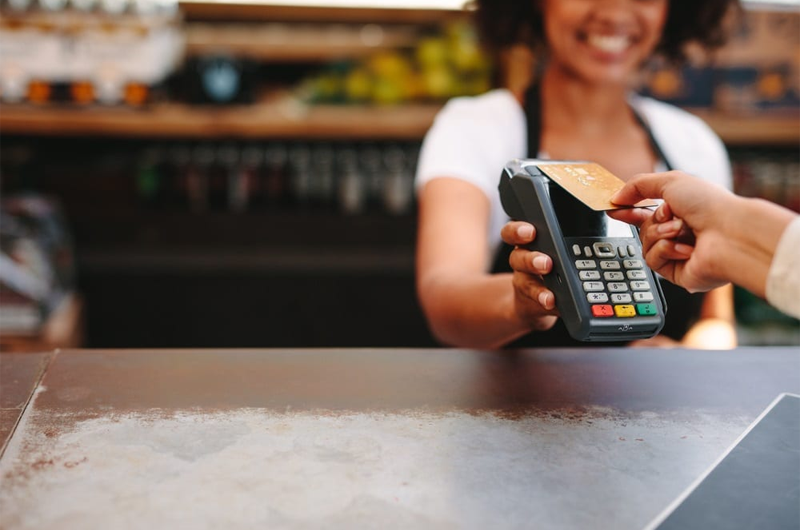Asteria Lending Inc. Unit 306 3/F 6762 National Life Insurance Bldg. San Lorenzo, Ayala Ave. Makati City
We’re Open: Mondays – Fridays
Office Hours:
9:00 am – 7:00 pm
Email:
[email protected]

Contactless payments are everywhere now and without even realising it, most people are using cash far less frequently than ever before. There are a few exceptions in less developed parts of the world but the Philippines, like most countries, have fully integrated contactless technology into their everyday economy. As an experiment, this blogger decided to live for a week without using contactless payments to see if it would have any kind of impact on the way they spent their money. The results were quite surprising. Here’s Asteria’s article on how living without contactless impacts on your life.
This is definitely the case when it comes to quick, small purchases like coffee, gum, snacks and drinks. Fumbling around with notes and change every time you want to grab a quick bite or something to quench your thirst makes the whole transaction take far longer than it really needs to. Similarly, having to get a specific amount of money from an ATM involves mentally budgeting for the day or week ahead, or being prepared to make multiple trips to the nearest machine. This isn’t an issue for people who live I urban areas, but for those in more rural settings, it can be quite difficult. It’s also easy to forget how cumbersome and unwieldy carrying around a lot of heavy coins can be, too. In just a few years, I got used to not dealing with the constant jangling of change and its sudden re-emergence became quite irritating.
When you’re using cash only, you need to think about what you’re sending more clearly than when you just tap your card or device to pay for things. This made me think about every little thing I was buying, and I realised how much I was spending on impulse purchases. I had always been aware that I have a habit of being a little too frivolous when it comes to parting with money to pay for things, I don’t really need but having to use physical currency made me realise just how often I do this. There’s nothing wrong with impulse purchases, per se, but living as a cash only customer for 7 days opened my eyes to how contactless payments encourage us to spend without really thinking it through. When I do use my cards again, I’ll certainly be thinking twice before I make a purchase in the heat of the moment.
Contactless payments are part and parcel of modern living and most people’s bank apps tell them when they’re about to go overdrawn or when they’re reaching the end of their savings. Budgeting using cash only takes a lot of time and effort as you need to learn how to allocate physical currency to cover different areas of your life. This meant either taking out larger amounts of cash at a time or planning to visit en route to work each day. I also had to think about weekend spending and make decisions about how much of my cash I wanted to part with well in advance.
Though cards can be cloned and easily stolen by pickpockets, there are also several added layers of security that can help you to deal with any unwanted situations. Banks generally have 24-hour emergency helplines who can prevent criminals from making use of stolen cards almost immediately after you’ve reported it. Unfortunately, the same can’t be said for cash. Though I didn’t experience anything like this during the week I lived without contactless payments, it did make me far more mindful of who was around and me also, where my cash was kept. Pickpockets are rife in some parts of the Philippines and in busy market areas where there a high concentration of cash only vendors, it’s easy to spend what you’ve stolen before the victim has even noticed. I may be thinking a little too over cautiously, but relinquishing contactless technology for a week did bring this issue to sharp focus as I played out a number of worst case scenarios that could ensue if I was to lose money accidently or fall victim to crime.
This was probably the most noticeable and inconvenient thing about not using contactless or card payments for a week. We forget how much rely on the internet to buy products and pay for services. Buying music and films wasn’t possible and ordering things from Amazon or eBay, though tempting, was definitely off the cards for a few days. In some ways, this turned out to be a positive thing, as it made me seek out physical shops where I could get the items I needed and, in many cases,, I ended up paying a bit less than I would have expected.
If I’m honest, I missed contactless and card payments a great deal for the seven days that I didn’t use them. The convenience and security they provide is something I’ve come to take for granted after using them so consistently since they were introduced. Being unable to make online transactions and feeling self-conscious when carrying more than a small amount of money on my person opened my eyes to how useful the often-maligned technology is. On the other hand, I did enjoy the conversations I had with local market traders and the way that using cash only forced me to think about my spending in more detail. I probably wouldn’t go back to a cash only way of living, but I will certainly remember that not everything has to paid for digitally. Similarly, thinking twice about just tapping without thinking about the amount I’ve spent is something positive that I can take from this experience going forward.